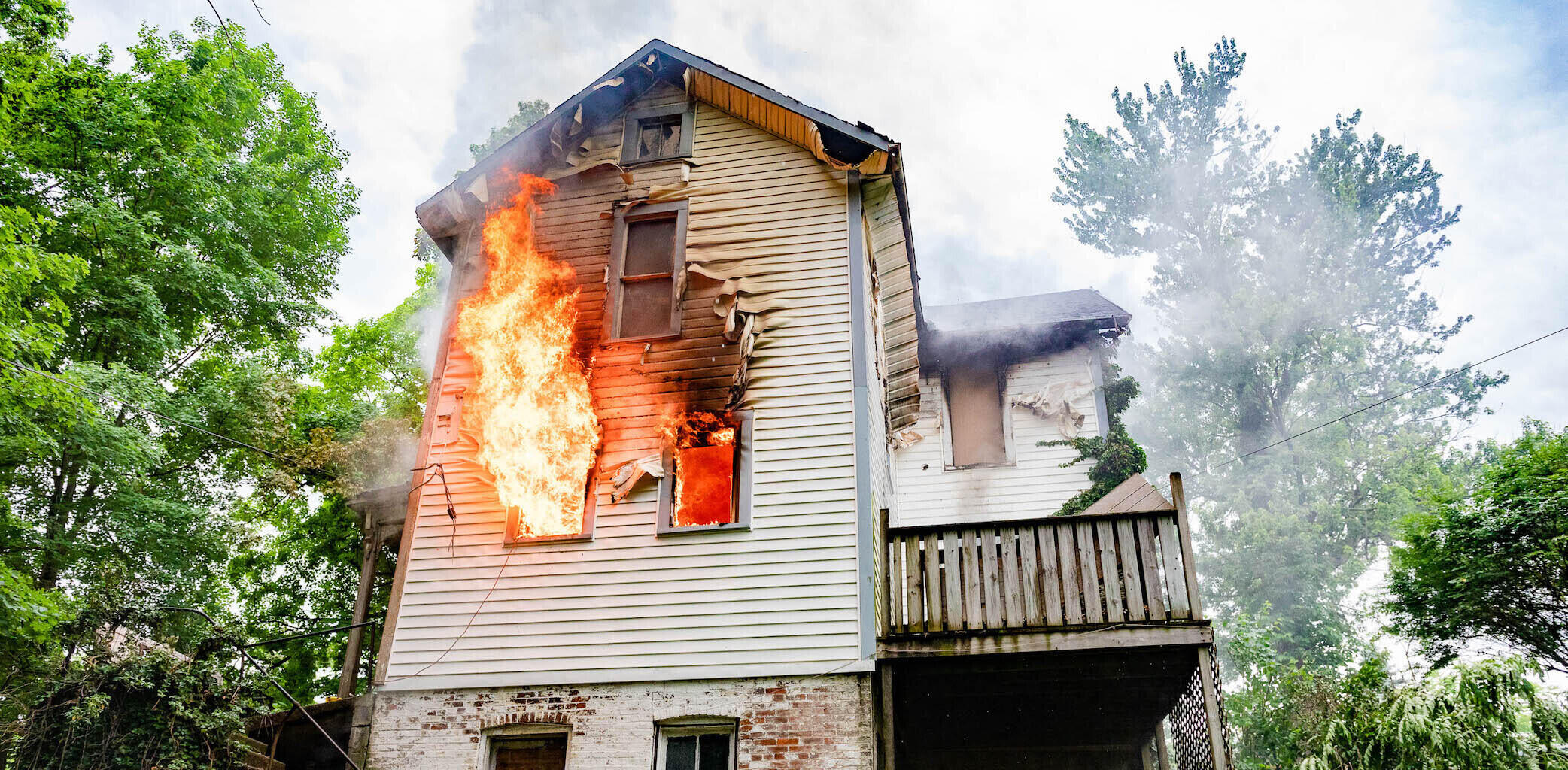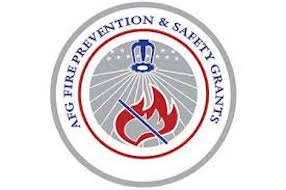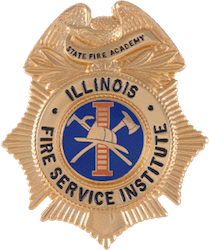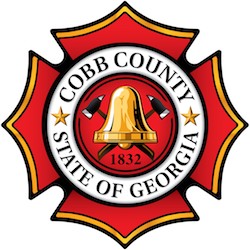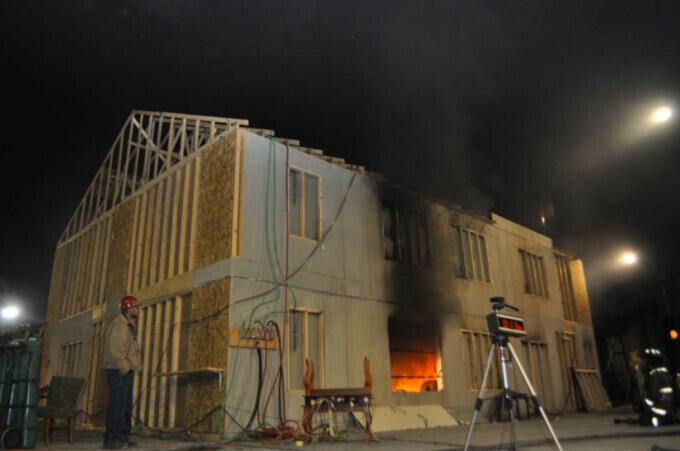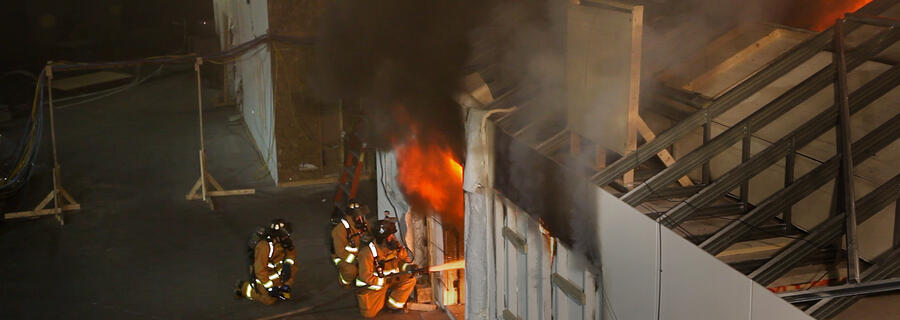The UL Firefighter Safety Research Institute (FSRI) is leading a DHS/FEMA AFG supported project examining coordinated fire tactics utilizing acquired structures. The increased understanding of fire behavior that has emerged from previous AFG funded research has raised many questions that revolved around what constitutes a coordinated fire attack and how to effectively accomplish it in different types of structures. To help answers these questions, the FSRI team brought their lab to the street to conduct experiments across three different structure types: single-family homes, multi-family dwellings, and a commercial structure (strip mall).
Single-Family Homes
For the single family homes, the team traveled to Ohio on two separate occasions to collaborate with the the City of Sidney Fire Department (Sidney, OH) and the Beavercreek Township Fire Department (Beavercreek, OH). In total, 20 experiments were conducted in 8 acquired single family residences which included second-story bedroom fires (14 experiments) and first-floor kitchen fires (6 experiments). The main control variables studied included the position of initial application of water, the ventilation method, and the timing of ventilation relative to water application.
It’s very important for us to be able to have fire service partners such as the Sidney and Beavercreek Township Fire Departments that allow us to do these experiments outside of the lab. Without their support, we would not have been able to get these structures and conduct this research. We could not have done this on our own.
-UL FSRI Director Steve Kerber
Multi-family Dwellings
In Cobb County, GA UL FSRI worked with Cobb County Fire & Emergency Services (Cobb County, GA) to conduct 13 experiments across 4, 10-unit garden-style apartments. The main variables studied included the position of initial application of water, the ventilation method, and whether that ventilation was performed prior to or after water was applied to the fire compartment.
Commercial Structure - Strip Mall
For the strip mall experiments, the team returned to Ohio, to partner with the Fairborn Fire Department (Fairborn, OH). In a 12 unit shopping plaza, 7 experiments were conducted with a focus on exploring the impact of ventilation (horizontal and vertical) on the fire dynamics of large, open volume commercial structures.
The research also included a collaboration with the University of Illinois Urbana-Champagne and Illinois Fire Service Institute (IFSI) to acquire data on the potential impact of fire conditions on firefighters and civilians. The IFSI contributed their expertise in porcine skin models and moisture measurement techniques (previously used in the 2013 DHS AFG funded Fire Attack Study) to simulate potential human exposure to elevated temperatures.

